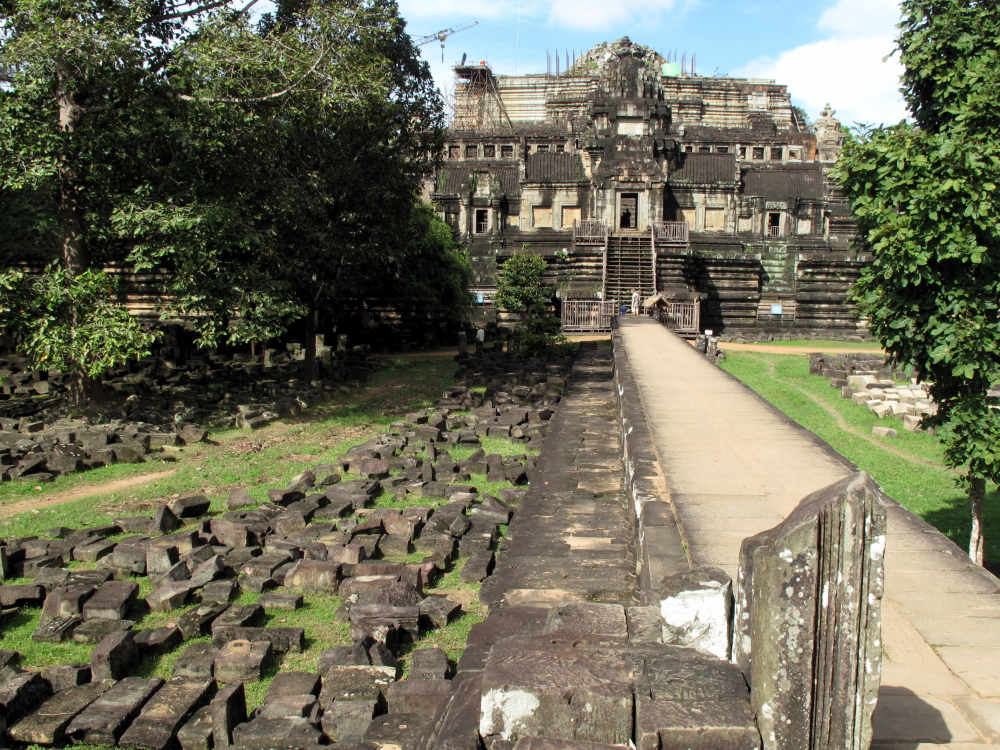The Baphuon temple was built around 1060, before the royal city of Angkor Thom was built around it, and only recently has restoration work resumed. The Baphuon was a man-made mountain or pyramid made of stone. Originally the temple was topped by a bronze shrine, according to Zhou Daguan.
But the foundations of the Baphuon were not stable, and the temple-mountain was probably already in some state of collapse before the Khmer capital was moved in the fifteenth century. When the Khmer returned to the area in large numbers late in the sixteenth century, Buddhism had a firm hold on the people and stones from the upper terraces of the Baphuon were used to construct the large reclining Buddha on the west side of the second tier. Unfortunately, this project further destabilized the structure and by the twentieth century the temple was in a serious state of collapse.

The Baphuon Temple, while still under reconstruction.
The restoration of the Baphuon is something of a saga in itself. By the middle of the twentieth century the structure was in an advanced state of ruin and had largely collapsed. The French began a massive reconstruction effort in 1960. They carefully disassembled the temple, numbering all the stones and documenting everything. But in 1972 the were forced to leave due to the civil war. On their return, they found that all of their careful documentation had been destroyed, leaving them with a giant jigsaw puzzle, but without the picture on the box that tells you how to put it together. They eventually figured it out and started to put the temple back together. Work is only about half done, which means that the temple is largely off-limits to visitors.
However, as of 2009 you could once again cross the long narrow stone causeway and ascend up to the first level gateway. You can only access a small area just inside the gateway, as work continues on the second and third levels. There is another small viewing platform on the west side of the temple where you can get a (slightly) closer look at the large reclining Buddha image the lies across the entire width of the second tier. This image was added in the sixteenth century, and was made using stones from already-collapsed sections of the temple.
Most visitors enter and leave via the east gate, next to the Terrace of the Elephants. However, you can easily walk here from the Bayon, and there's a nice path from the road up past the ponds in front of the Baphuon. In addition, you can leave through a gate in the wall on the north side of the temple, which gives you access to the royal enclosure with the Phimeanakas at its center.